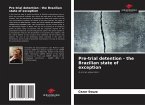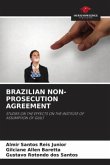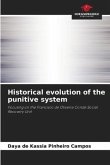At first glance, the hypothesis raised in this investigation seems disconnected from dogma, since historical and cultural heritage destroyed by the action of time seems to be a legal nothing. The provisions described in articles 62 to 65 of the Environmental Crimes Law protect offences against urban planning and historical heritage. Drawing a parallel, while Italy has a Cultural Heritage and Landscape Code, the Brazilian legislator has reserved only four (4) provisions for the criminal protection of this true Brazilian multicultural treasure. So the central questions guiding the discussion are: Is this enough? Is criminal law in environmental matters expanding? Is there a new form of criminality arising from the so-called risk society? Who will be held criminally responsible for the Mariana and Brumadinho tragedies? What are the legal effects when a listed public asset is destroyed by the action of time (non facere)? If studied in more depth, improper omission offences could helpanswer all these questions.
Bitte wählen Sie Ihr Anliegen aus.
Rechnungen
Retourenschein anfordern
Bestellstatus
Storno








